A new agenda for city transport
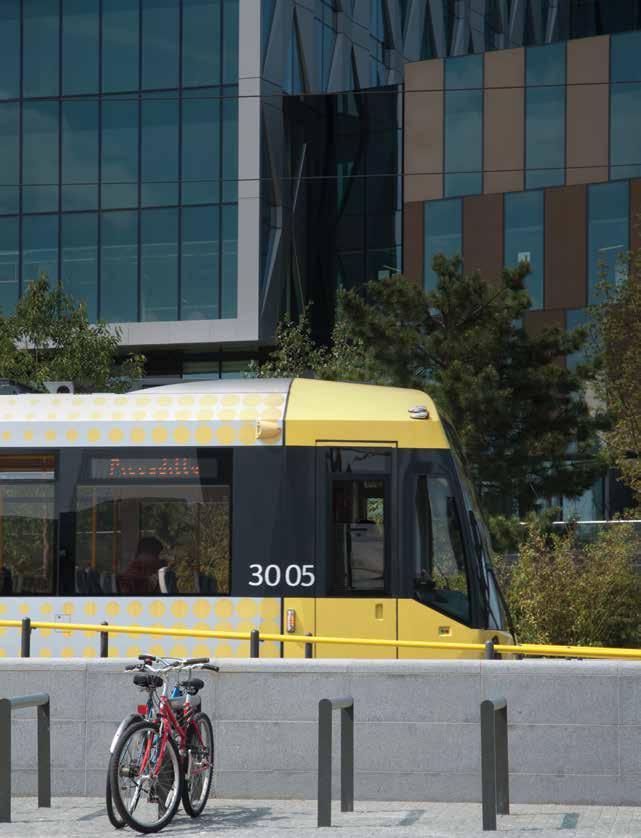
A new agenda for city transport
by Rebecca Willis and Costanza Poggi
Green Alliance
Green Alliance is a charity and independent think tank focused on ambitious leadership for the environment. We have a track record of 35 years, working with the most influential leaders from the NGO, business, and political communities. Our work generates new thinking and dialogue, and has increased political action and support for environmental solutions in the UK.
This briefing is based on discussions in two constituency workshops, held in Greater Manchester, on 9 September 2016, and in London, on 30 September 2016. They were hosted by Jonathan Reynolds, MP for Stalybridge and Hyde, and Helen Hayes, MP for Dulwich and West Norwood, respectively. The workshops brought together around 30 stakeholders, including local politicians, business, civil society, and health and air quality experts.
We are grateful to the Schroder Foundation and the Joseph Rowntree Charitable Trust for supporting this work.
Green Alliance
11 Belgrave Road, London, SW1V 1RB 020 7233 7433
ga@green-alliance.org.uk
www.green-alliance.org.uk
blog: greenallianceblog.org.uk
twitter: @GreenAllianceUK
The Green Alliance Trust
Registered charity no. 1045395
Company limited by guarantee
(England and Wales) no. 3037633
Registered at the above address
Published by Green Alliance
February 2017
ISBN 978-1-909980-84-6
Designed by Howdy
© Green Alliance, 2017 Green Alliance’s work is licensed under a Creative Commons Attribution-Noncommercial-No derivative works 3.0 unported licence. This does not replace copyright but gives certain rights without having to ask Green Alliance for permission.
Under this licence, our work may be shared freely. This provides the freedom to copy, distribute and transmit this work on to others, provided Green Alliance is credited as the author and text is unaltered. This work must not be resold or used for commercial purposes. These conditions can be waived under certain circumstances with the written permission of Green Alliance. For more information about this licence go to http:// creativecommons.org/licenses/ by-nc-nd/3.0/
Please note: our Creative Commons licence does not cover the use of any photographic images featured in this report which are subject to separate copyright and must not be shared or copied without permission.
1 Contents Foreword 2 What's the challenge? 3 Why we need cleaner, greener city transport 6 Lessons from Manchester and London 8 What should be done 14 Endnotes 20
Foreword
As UK cities gain more control over their own affairs, with Greater Manchester due to elect its first mayor in spring 2017, there are opportunities to develop new strategies for city transport. One major concern is the urgent need to tackle air pollution.


More widely, rethinking how people move in and around our cities has the potential for considerable social, economic, health and environmental benefits.
We held workshops with local politicians, businesses, civil society, and health and air quality experts, in our constituencies in London and Manchester, to discuss how these benefits could be delivered.
This briefing summarises the findings, offering ideas on improving city transport, showing how national policy can best support local initiatives and what role MPs can play.
2
Helen Hayes MP for Dulwich and West Norwood
Jonathan Reynolds MP for Stalybridge and Hyde
What’s the challenge?
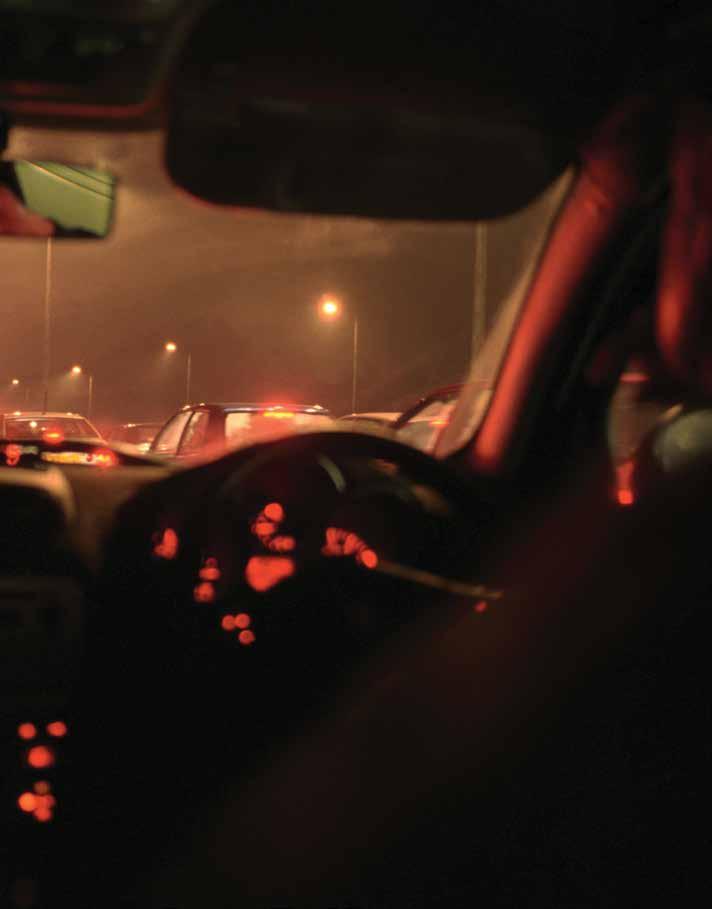
3
Transport and air pollution
High levels of nitrogen dioxide (NO 2) and particulate matter (PM10 and PM2.5) in the air cause significant impacts on human health. The main source of these emissions is road transport, with the highest contribution from diesel vehicles.1
Exposure to air pollution is a cause of heart conditions and respiratory diseases.2 Forty thousand premature deaths a year across the UK have been linked to air pollution and research shows that children and older people are more vulnerable to its effects.3
The UK has national legislation and policy through the 1956 Clean Air Act and Defra’s UK Air Quality plans for achieving EU air quality limit values for NO 2 in the UK. The EU sets standards through the 2008 Ambient Air Quality Directive. But the UK is in breach of these limits.
Thirty eight out of 43 air pollution monitoring zones in the UK have illegal levels of air pollution. 4 Brixton Road in London had used up its annual allocation for exceeding air pollution limits just five days into 2017.5
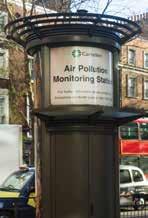
38 out of 43 air pollution monitoring zones in the UK have illegal levels of air pollution.
In November 2016, a High Court ruling ordered the government to draw up an improved plan to bring air pollution within European legal limits. It is now expected to produce new plans for consultation by April 2017, setting out how each zone will improve air quality to comply. The UK’s departure from the EU raises uncertainty over future air quality legislation and monitoring.
4
Transport and climate change
The transport sector is the second largest emitter of CO 2 in the UK, accounting for around a quarter of total CO 2 emissions.6
A range of policies to reduce carbon emissions from transport have been introduced over the past few decades, including EU vehicle emission standards which set incremental limits for emissions from new cars.
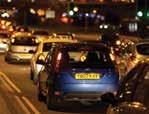
Changes to vehicle excise duty in the 1990s encouraged a shift from petrol to diesel cars. But, although diesel vehicles emit less CO2 than their petrol equivalents, they emit more dangerous air pollutants. This has stalled progress in cutting air pollution in cities.
To meet future carbon targets, the UK needs to continue cutting CO 2 emissions from transport. But future solutions need to ensure that emissions of NO 2 and particulates are also reduced.
The transport sector accounts for around a quarter of total CO2 emissions.
5
transport

6
Why we need cleaner, greener city
Cleaner transport systems help those on lower incomes.
The new wave of ultra-low emission vehicles, including electric vehicles, and more active travel options such as walking and cycling, offer the opportunity to tackle air quality and meet climate targets, whilst avoiding trade-offs between human health and the environment.
As well as tackling environmental and health challenges, more integrated, cleaner transport systems can also have wider social and economic benefits.
Many cities are experiencing population growth leading to increased traffic congestion. Policies to encourage more active travel and the use of public transport help to keep cities moving.
A Copenhagen study estimates that each kilometre travelled by bike results in a socioeconomic gain of around 20p, whereas a kilometre travelled by car results in a loss of approximately 65p. Alongside health benefits, time saved was a significant factor.7
Cleaner transport systems help those on lower incomes. Policies which promote public transport and active travel would, for instance, benefit the 31 per cent of households in Manchester, and 43 per cent of households in London that do not have a car.8,9

7
Lessons from Manchester and London

8
Opportunities to make our transport system cleaner, greener and smarter are found at the national, city region and local levels.
MPs can play an important role by linking these opportunities, ensuring that national policy reflects local needs and perspectives, and by leading and supporting ambitious policies at the city region and local levels.
We held two workshops in constituencies in London and Greater Manchester. Both cities have transport strategies to tackle air quality and carbon emissions. The workshops brought together local politicians, businesses, civil society, and health and air quality experts.
Here, we outline the policies in place, best practice examples and challenges identified by our workshop participants.
9
Greater Manchester
Transport for Greater Manchester (TfGM) is responsible for transport provision in Greater Manchester. Its 2040 vision for the future of transport in the city aims to create economic, environmental and social benefits.10 The vision emphasises connectivity between areas and between modes of transport, linking planning policy with transport provision, increasing shared car ownership such as car clubs and encouraging the uptake of electric vehicles.
Transport for the North is a body recently formed to develop a northern transport strategy. It aims to transform and connect transport systems across the north of England. It will play a significant role in ensuring the systems are developed and connected sustainably, making the most of available opportunities to reduce transport emissions.
Challenges highlighted at our workshops were the need for better cycling and walking infrastructure, better co-ordination between transport modes and improved communication between the parties involved in electric vehicle infrastructure, including local government, electricity providers and vehicle manufacturers.
10
Walk Once a Week
This programme is an initiative by TfGM and Manchester Living Streets. It encourages pupils to walk to school once a week, rewarding them with a monthly collectable badge. As result of the programme:
One million pupils from 4,000 schools were encouraged to walk to school in 2015.
Pupils' walking rates increased by 23 per cent in the first five weeks of the programme.

Congestion was reduced, with 30 per cent fewer cars at the gates of participating schools.

Clean Air for Schools programme
This award winning programme, run by TfGM, targets the tailpipe emissions from 41 of TfGM’s fleet of 93 school buses, delivering significant environmental benefits and reducing children’s exposure to harmful air pollutants.
Funded through the Department for Transport’s Clean Bus Technology Fund, the programme retrofits air pollution control equipment to diesel buses. Emission tests showed reductions of 99 per cent in nitrogen oxide levels, 93 per cent in particulates, 99 per cent in hydrocarbons and more than 97 per cent in carbon monoxide.
11
London
London has more responsibility and control over transport strategy than Manchester, as a number of planning powers were devolved under the Greater London Authority Act, including air quality and the environment. It also has responsibility for the city wide co-ordination of public transport, cycling and walking.
The city has introduced measures to cut air pollution and carbon emissions from transport which have included investment in public transport, walking and cycling. More recently it has introduced electric vehicle charging infrastructure and a Low Emission Zone (LEZ) which discourages the most polluting vehicles from entering London via a charge.
Workshop participants were concerned about the lack of action on air pollution in the short term, particularly around schools and hospitals. They highlighted the need to expand some of the measures used in central London, like traffic restrictions and bicycle hire schemes, to the rest of the city, as well as improving existing cycling networks.
Pigeon air patrol
In March 2016, tech company Plume Labs, working with the agency DigitasLBi, released a flock of pigeons in London carrying backpack air pollution monitors. The lightweight sensors were stitched onto small fabric vests that fitted comfortably on the pigeons and measured levels of nitrogen dioxide and ozone.
The three day campaign allowed people to track the pigeons on a website and see the readings from air pollution monitors on Twitter. This helped to increase public understanding of how air pollution affects the city.

12
Changing behaviour
The London Borough of Southwark has a strategy to increase cycling in the borough and improve cyclists’ experiences on the road. Its aim is to more than double cycling in the next ten years. The council has set up initiatives such as Southwark Spine: a new cycling route, which will link the planned north-south Cycle Superhighway from Elephant and Castle right through the borough to Dulwich.

Southwark has also promoted #onething, which suggests individual actions people can take to reduce their impact on the environment and air quality.
Regent Street Consolidation Centre
This scheme aimed to reduce the volume of delivery vehicles around Regent Street, which accounted for 35 per cent of all peak time traffic, to cut congestion and improve visitors’ experience.
It has led to an 80 per cent reduction in lorry movements in the area. Retailers now receive deliveries from all their suppliers in one place, situated outside the congestion charging zone, and then consolidate these into one delivery which comes via electric truck.

13
What should be done
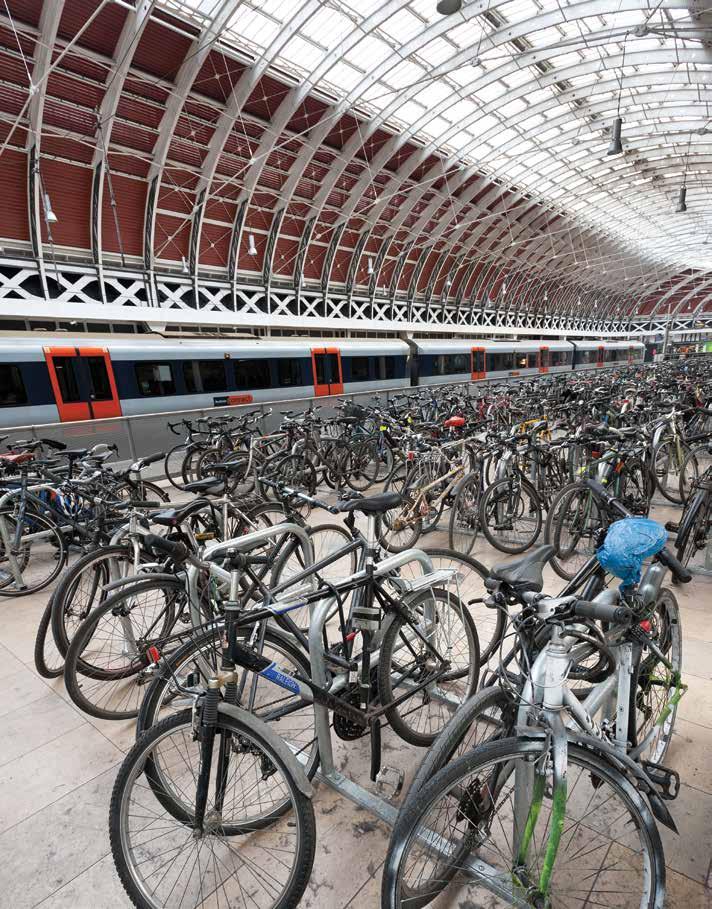
14
Who is responsible for what?
National government sets air quality and carbon emission targets, develops national level policies and provides funding to implement them.
City regions have been given further powers on transport and environmental planning with devolution. These powers vary by city region.
Local authorities are responsible for monitoring and implementation of air quality measures. Their powers to improve air quality are used through local planning, procurement, traffic management and encouraging residents to make use of public transport and active travel options.
The ability of cities and local authorities to tackle transport challenges depends on the policy framework, incentive structure and funding levels set by national government.
The consensus from our workshops was that much more could be done at the national, local and city region level to improve air quality, reduce carbon emissions and build a safer and more efficient city transport system. The following priorities at the three levels emerged:
1
Local: short term responses to acute air pollution episodes
2 City region: integrating transport systems
3 National: tackling vehicle emissions
15
Local: short term responses to acute air pollution episodes
It is often up to individual citizens to take preventive action in the event of acute air pollution episodes. But local authorities could do more to help.
Actions suggested:
Plan ahead for acute episodes of air pollution, by establishing local strategy groups on air quality, including local government experts on transport and public health and community representatives; and by providing clear advice to those most vulnerable to air pollution, such as schools and hospitals.
Set localised traffic restrictions, such as ultra-local low emission zones to limit vehicle use when there is a risk of acute air pollution.
Some of these measures would require local authorities or city transport authorities to be given greater powers. These measures could be implemented initially on a trial basis.
16
1
2 City region: integrating transport systems
Cities could play a crucial role in ensuring a better integrated transport system, so people can move more conveniently between different travel options. Whilst both Greater Manchester and London have clear ambitions to improve integration, more support from national government and further devolution of transport planning powers would be needed.
Actions suggested:
Factor in the health costs of air pollution, and the health and social benefits of active travel when making transport assessments.
Increase investment in cycling infrastructure, such as segregated cycle lanes and bike parking; a recent report by the All Party Cycling Group recommended an increase in investment from £1 to £10 per person per year by reallocating other transport spending. This would help UK cities to achieve the cycling levels seen in some other European cities, like Copenhagen and Amsterdam.11
Devolve public road spending, and a proportion of revenues from vehicle excise duty, to the city level to increase investment in sustainable transport. This could be accompanied by devolving greater responsibility and powers on transport planning and programmes.
Limit private car use, such as by extending 20 mph speed restrictions, particularly in residential areas, and introducing car-free days.
Integrate electric vehicles into wider travel strategies, such as car clubs, rather than as a straight substitute for privately owned petrol and diesel vehicles.
Improve co-ordination of freight movement, with incentives for best practice, for example the Regent Street Consolidation Centre (see page 13).
17
3 National: tackling vehicle emissions
Although alternatives to private vehicle use should be strongly encouraged, policies should also tackle emissions from existing private vehicles. Many of these solutions would involve government departments significantly increasing their level of co-ordination and setting a clear national strategy. Departments involved should include the Department for Environment, Food and Rural Affairs, the Department for Communities and Local Government, the Department for Business, Energy and Industrial Strategy, and the Department for Transport.
Actions suggested:
Phase out diesel engines in cities, signalled well in advance and introduced over time. To avoid a switch to low efficiency petrol engines, which would increase carbon emissions, this could be complemented with other incentives and signals. For example, a diesel scrappage scheme linked to ultra-low emission vehicle uptake, or an incentive package for public transport, walking and cycling.
A more strategic approach to electric vehicles, including standardisation of charging infrastructure, and priority access and parking for electric vehicles.
Favour low emission vehicles through taxation and other incentives, such as vehicle excise duty.
18
Opportunities for MPs to help
The government is developing a range of national policies over the coming months, designed to improve air pollution and reduce carbon emissions.
MPs can play an important role in supporting ambitious action at the following key moments:
Air quality plan
Expected April 2017
In November 2016, a High Court ruling ordered the government to draw up an improved plan to bring air pollution, particularly nitrogen dioxide pollution, within European legal limits, judging that the government’s existing plans were inadequate. A plan from Defra is expected for consultation by April 2017, with a view to publish the final plan in July 2017. This will set out the details of how each air quality zone will bring levels of air pollution within European standards.
The emissions reduction plan
Expected by March 2017
This cross-departmental plan will set out policies to meet the UK’s carbon emissions reduction targets into the 2030s, including those on transport.
The industrial strategy
Expected by the end of 2017
This will set out policies to ensure the UK’s continued economic competitiveness and productivity. It is an opportunity to ensure low carbon industries and technologies related to transport are supported.
19
Endnotes
1 Defra, statistical release, December 2016, Emissions of air pollutants in the UK, 1970 up to 2015
2 Royal College of Physicians, 2016, Every breath we take, the lifelong impact of air pollution
3 ibid
4 Defra, 2016, Air pollution in the UK 2015
5 BBC News, 6 January 2017, ‘Brixton Road breaches annual air pollution limit in five days’
6 DECC, 2016, Final UK greenhouse gas emissions national statistics: 1990-2014
7 City of Copenhagen, 2015, The bike account 2014
8 TfGM, 2016, Transport statistics Greater Manchester
9 TfL, 2016, Travel in London, Report 9
10 TfGM, 2016, Greater Manchester transport strategy 2040, our vision
11 The All Party Parliamentary Cycling Group, 2013, Get Britain cycling, report from the inquiry
20
21
Green Alliance
11 Belgrave Road, London, SW1V 1RB
020 7233 7433
ga@green-alliance.org.uk
www.green-alliance.org.uk
blog: greenallianceblog.org.uk
twitter: @GreenAllianceUK
The Green Alliance Trust
Registered charity no. 1045395
Company limited by guarantee
(England and Wales) no. 3037633
Registered at the above address















